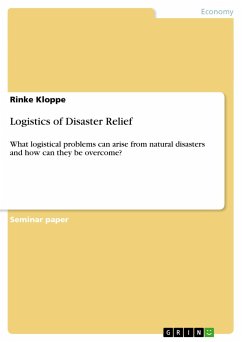
Insolvency Tourism. Private and corporate debt relief through insolvency proceedings in the U.K. and Germany

PAYBACK Punkte
0 °P sammeln!
Essay from the year 2013 in the subject Business economics - Investment and Finance, grade: 1,3, The FOM University of Applied Sciences, Hamburg (FOM Berlin), course: International Investment and Controlling, language: English, abstract: Germany has a particular, uniform regulation for insolvency of natural and juristic persons, which is also realized similarly in other countries all over the world. Such regulations by law shall prevent an avalanche effect of single insolvent debtors affecting their creditors, who, furthermore, could again damage their creditors, causing a ripple effect throug...
Essay from the year 2013 in the subject Business economics - Investment and Finance, grade: 1,3, The FOM University of Applied Sciences, Hamburg (FOM Berlin), course: International Investment and Controlling, language: English, abstract: Germany has a particular, uniform regulation for insolvency of natural and juristic persons, which is also realized similarly in other countries all over the world. Such regulations by law shall prevent an avalanche effect of single insolvent debtors affecting their creditors, who, furthermore, could again damage their creditors, causing a ripple effect throughout an economy. Although the collective settlement of the creditors' claims is the focus of the insolvency regulation, debt relief of insolvent debtors is an attractive characteristic, especially for the insolvent debtors. Following a certain obligation time, debt relief gives insolvent debtors a chance to take part in businesses again, to be productive, and to contribute to progress and the gross national product. Thus, insolvency regulation is justified due to economic reasons. However, the debt relief has been discussed controversially, since it could also motivate the unreasonable use of debts. Whenever natural persons are directly liable and their personal assets are at risk, due diligence might be conducted more duteously and debts are only claimed in case they can be payed back. By contrast, insolvency, imminent illiquidity, or indebtedness might be promoted even more due to the second chance by debt relief. Moreover, a current trend of insolvency tourism indicates the attractiveness of the debt relief implementation. Since the process of debt relief takes a relatively long time in Germany, different agencies even advertise to order debt relief in the U.K., where the relief process only lasts one year. The present assignment introduces the basics, which facilitate insolvency tourism, and deals with the issue of its applicability to juristic persons.













